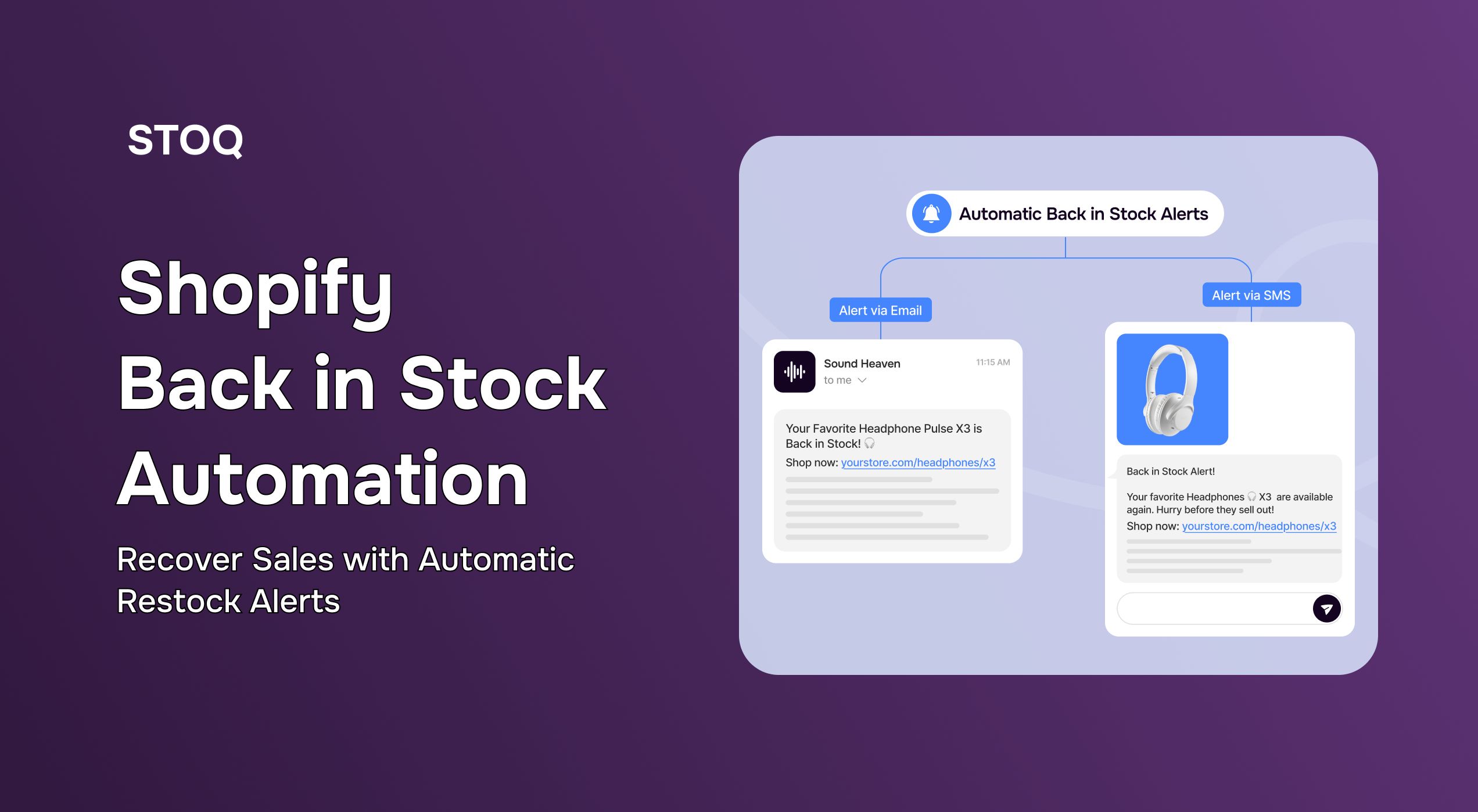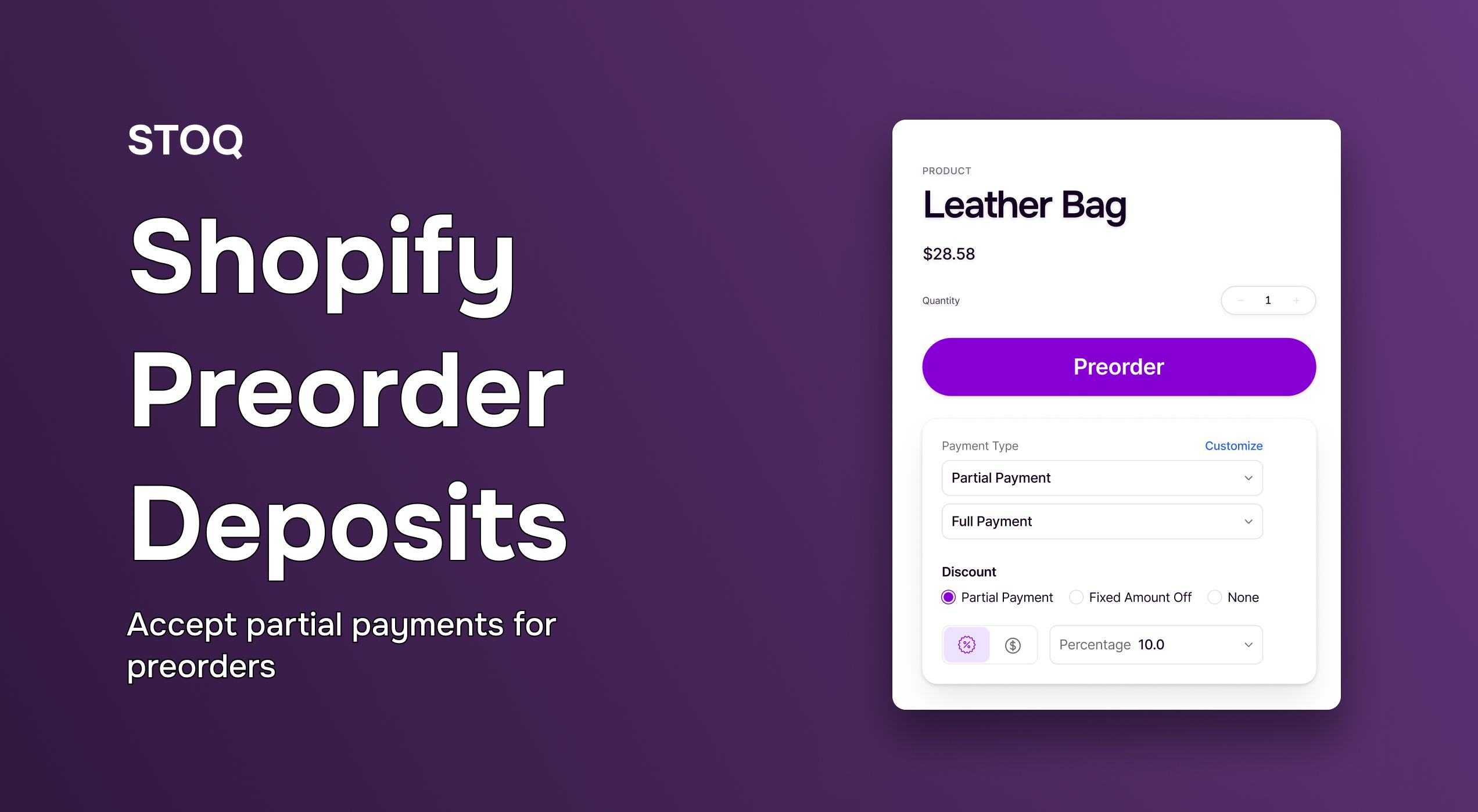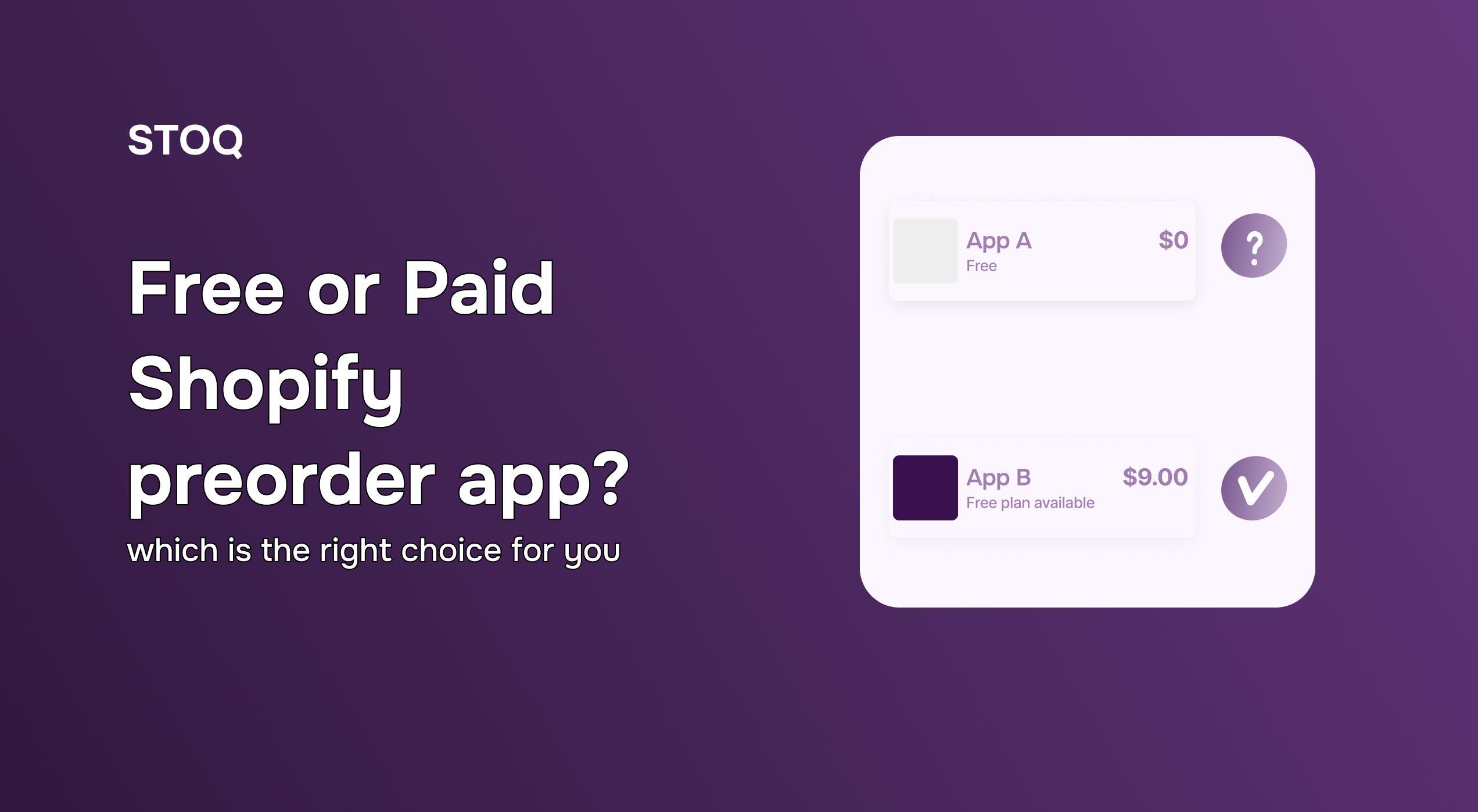How to set up and optimize out of stock emails on Shopify for real results?

In the world of e-commerce, stockouts occur too often. However, a stockout does not always have to mean you are losing a sale. Analysis shows that nearly 70% of carts are abandoned before checkout. While the reasons are varied, from surprise costs to poor UX, sellers believe that stockouts play a role in this behaviour. The great thing is, you often can recapture that demand with automated out of stock email alerts (commonly known as back in stock alerts).
In this article, you will discover what out-of-stock email alerts are in Shopify, how to set them up through an app like STOQ, and real examples to write your alerts that will recover as much revenue as possible and build deeper customer loyalty.
What are Shopify out of stock emails, and why do they matter
When a product sells out, it doesn’t have to mean losing a customer. Shopify out-of-stock emails, also called back-in-stock notifications, allow shoppers to subscribe for updates when a sold-out item becomes available again.
When inventory is replenished, an automated email is sent instantly: “Good news! Your favorite [Product Name] is back in stock.”
This quick, automated message turns lost opportunities into returning customers.
Why these emails matter
- Recover lost sales: Win customers back the instant you restock, so they don’t get stolen away by competitors.
- Build customer trust: Letting shoppers know when their product is back in stock builds trust and shows transparency.
- Improve the shopping experience: Shoppers feel important and engaged, even though they have to wait for an item to return in stock.
- Increase engagement: Customers who subscribe to be notified on restock are already warm buyers, leading to higher open and conversion rates.
How to set up out-of-stock email alerts in Shopify
Creating automated email alerts for out of stock products in Shopify is one of the most effective ways to win back lost revenue. Since Shopify doesn’t provide built-in back-in-stock emails, the best option is to use a dedicated app like STOQ, which gives you full control over restock notifications and email templates.
Here’s how to set it up step-by-step:
1. Install a back in stock app
Head to the Shopify App Store and install a reliable back in stock notification app, such as STOQ. It’s purpose-built for Shopify merchants and allows you to set up both email alerts and preorder options with minimal effort.
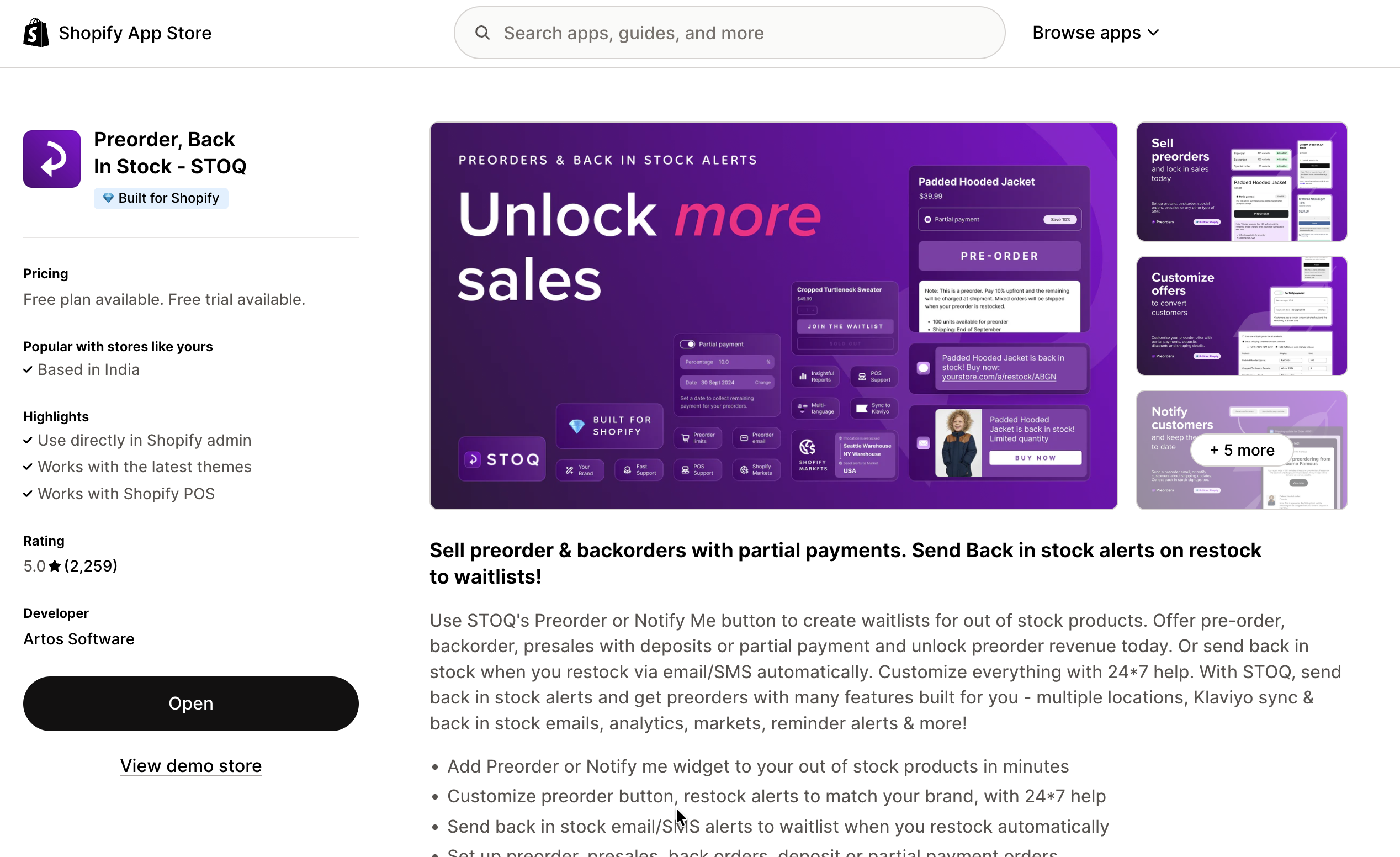
2. Open the email template settings
Once installed, navigate to your STOQ dashboard and go to "Notifications" tab under the "Back in Stock Alerts" settings. This is where you’ll create and customize the messages customers receive when products are restocked.
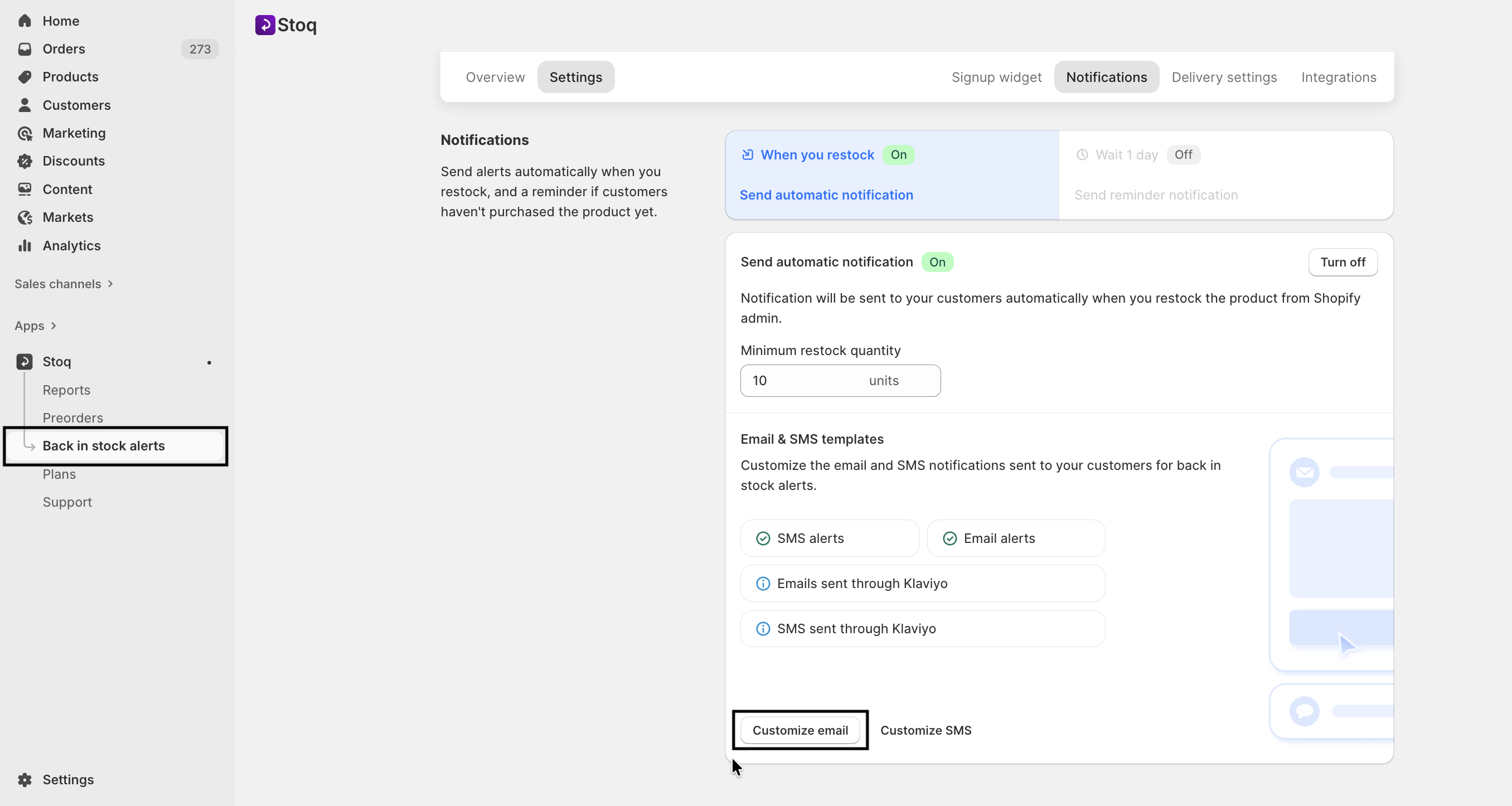
3. Customize the email content
Update the subject line, header, and body text to reflect your brand voice. You can also add dynamic fields like product name, image, and direct “Shop Now” links so customers can quickly complete their purchase once the item is back in stock.

4. Adjust the design and branding
Use STOQ’s "Colors & styles" feature in editor to match the email’s design to your store’s branding. Change colors, and typography styles so the email feels seamless with your overall customer experience.

5. Save and test the workflow
Save your customized template and run a test notification to make sure everything looks right. Confirm that links are working and that the email displays correctly across different devices. You can also try sending a test email to check for yourself!
Setting up back-in-stock email alerts only takes a few minutes but can have a major impact on your bottom line.
Best practices for writing effective out-of-stock emails
Your out-of-stock email is more than just an update; it’s a chance to build trust, retain interest, and recover lost revenue. Here’s how to craft messages that engage customers and turn disappointment into opportunity:
1. Explain and empathize
Start by acknowledging the situation honestly. A simple, human message goes a long way. For example: “We’re so sorry this item sold out faster than expected due to high demand. But don’t worry, it’ll be back soon!”
2. Use clear, action-driven CTAs
Tell customers exactly what to do next. Include buttons or links such as:
- “Notify me when available”
- “See similar products”
- “Preorder now”
Strong calls-to-action (CTAs) prevent drop-offs and guide customers to stay engaged with your store.
3. Offer alternatives or support options
Don’t let the journey end with “out of stock.”Suggest substitutive or similar items that can be recommended to the shopper while they wait. "While you wait for your order, here are a few substitutes we thought you may like."
Also suggested to add customer service contact information, like a support email or chat link. This lets the customer know that you care about fixing their issue, adds connection, and helps create a seamless, purposeful shopping experience.
4. Add a reason to stay engaged
Give your customer an incentive to return with a small reason to come back. For example: "Use code BACK10 for 10% off once this item comes back."
5. Keep your voice friendly and brand-appropriate
The tone of your friendly voice should be warm, empathetic, and professional in your brand's voice. It should not sound robotic or overly formal. You should write as if you were talking to your customer, i.e., "Thanks for your patience; we can’t wait to get this back to you!"
A friendly voice that aligns with your brand helps reinforce customer trust and keeps your store top of mind when they are waiting for restock.
Optimizing out-of-stock emails for real results
After you have established your out-of-stock email alerts, optimization is what shifts them from a notification to a high-performing channel of revenue. Here's how to better achieve alignment with every aspect to increase engagement and conversions:
1. Personalize your subject lines
To grab attention right away, use their first name or the product name. Here are a couple of examples: “Don't wait, our best-selling backpack is back in stock!”
Personalized subject lines feel more relevant and lead to much stronger open rates because they resonate directly with the individual shopper's interests.
2. Segment your audience
Every customer is not the same. Utilize your email platform or audience data from STOQ to segment subscribers by behavior, such as first-time buyers, repeat customers, or product categories. For example: “Exclusive restock for our VIP customers.”
Targeted messages will appeal to your subscribers better, and you will deepen your customer relationship with personalized messages.
3. Leverage your data insights
Pay close attention to which products get the most “Notify Me” sign-ups. These are your high-demand items. Restock them first and reference their popularity in your email copy: “Over 500 people were waiting for this restock. Don’t miss out again!”
Use analytics from STOQ’s dashboard to identify trends, optimize restock timing, and fine-tune messaging for better performance.
4. Send timely follow-ups
If a customer doesn’t click the first back-in-stock alert, follow up within a few days with a friendly reminder. For example: “The [Product Name] is still waiting for you, but not for long!”
A gentle nudge like this helps capture customers who may have missed or forgotten the initial notification.
5. Add social proof and urgency
Trust and excitement drive conversions. Incorporate elements like product reviews, star ratings, or testimonials to validate quality. Pair that with urgency cues such as: “Only a few left in stock order before it’s gone again!”
These subtle prompts encourage quicker action and increase conversion rates.
6. Optimize for mobile devices
Most Shopify shoppers open emails on their phones. Make sure your design is mobile-responsive with:
- Large, easy-to-tap buttons
- Clear fonts and short paragraphs
- Quick-loading images
Always preview and test emails on both desktop and mobile to ensure a seamless user experience.
Conclusion
Every day a product is out of stock, you lose revenue potential. Implement these best practices today to capture growth opportunities.
Stockouts happen. Lost sales don’t have to. Get started with STOQ’s free plan today and automate your back in stock emails so you never miss another sale.
STOQ is easy to start, powerful as you grow.

